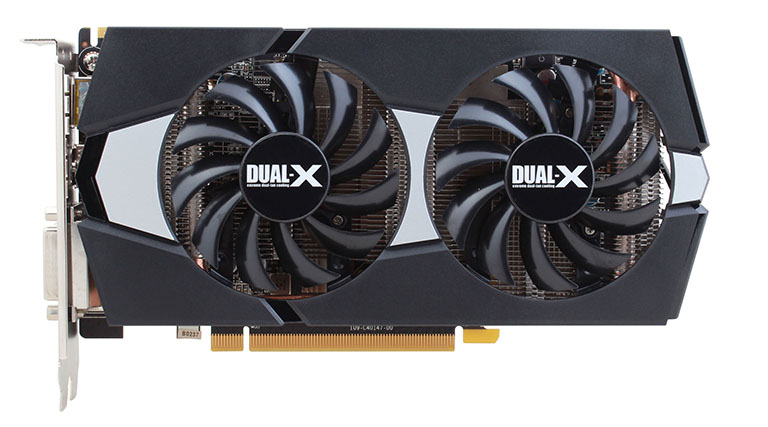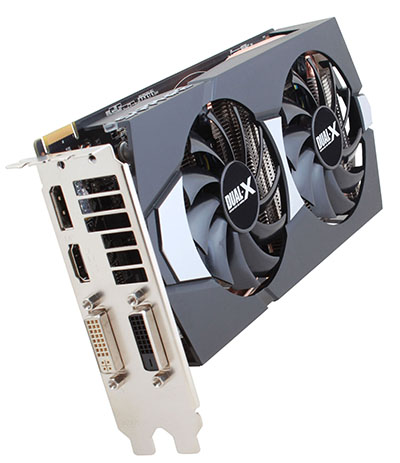Sapphire's Dual-X card
AMD shipped us a Sapphire Radeon R7 265 Dual-X card for evaluation. Keeping things simple, Sapphire uses the same cooler found on the R9 270 version we reviewed recently. It is logical to assume that other board partners will also go down the same path of using heatsinks employed on their R9 and older Radeon 7-series cards.
Two PWM-controlled fans drive air over a heatsink that takes up a large portion of the 8in PCB. A couple of thick heatpipes pierce through the heatsink at both ends and are sandwiched between another heatsink that makes contact with the core. It's a well-thought-out implementation that has historically worked very well.
A single CrossFire connector paves the way for two boards to run in tandem. Power is sourced from a six-pin connector located on the right-hand side. Closer examination of the board shows that, just like the R9 270 model, the PCB has previously been used on higher-end cards; there's provision for another six-pin connector for use on, say, a Radeon R9 270X.
AMD clocks the R7 265 GPU in at a peak 925MHz core (available via PowerTune with Boost) and memory operating at an effective 5,600MHz. Continuing the physical commonality between Sapphire's midrange cards is the use of eight Hynix GDDR5 chips rated at an effective 6,000MHz, intimating that the card should, on the memory at least, run much faster than the specifications suggest.
Sapphire's muscular card toes the reference line by keeping to these 925/5,600MHz frequencies, though it's inevitable we'll see an 'OC' version appear at retail soon.
Ports-wise, Sapphire runs with AMD's recommended quartet of single-link DVI, dual-link DVI, HDMI and DisplayPort. Backed by a two-year warranty, it is sensible to think of this £115 card as a Radeon HD 7850 with a different name.
Partners such as Sapphire will need to play a careful positioning game with this GPU. Increase the core and memory clocks too high with an overclocked version and there's the real possibility of the R7 265 benchmarking faster than an R9 270 or R9 270X.
One downside of the R7 265's release is that, at this time, AMD is not providing any free games with the card. The days of bundled triple-A games seem to have gone.












